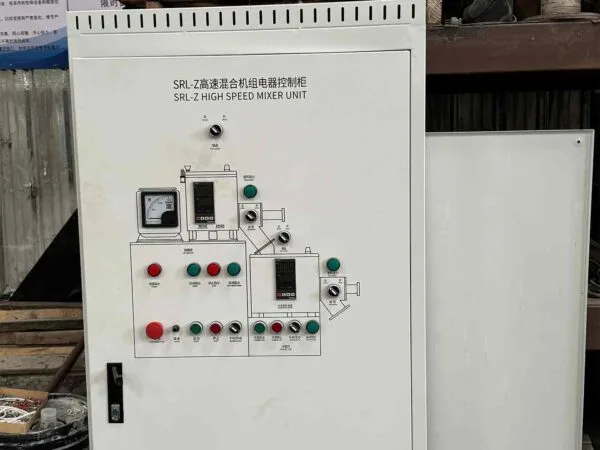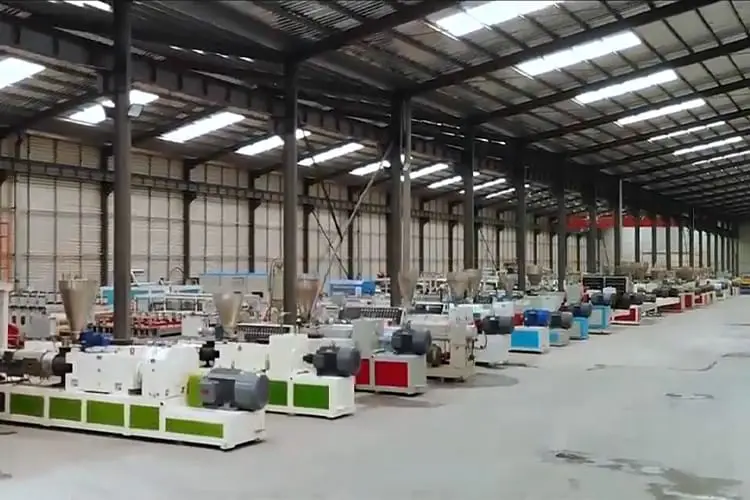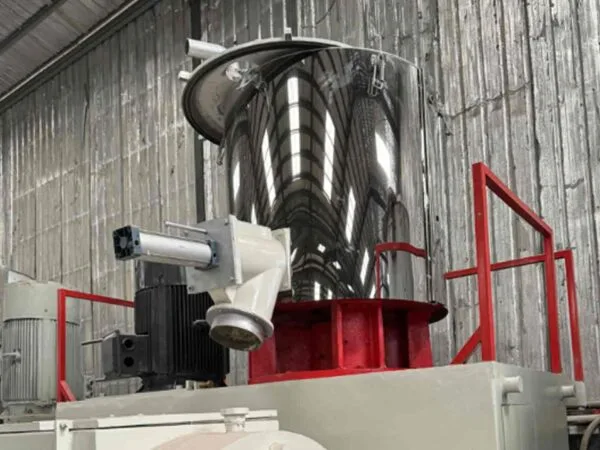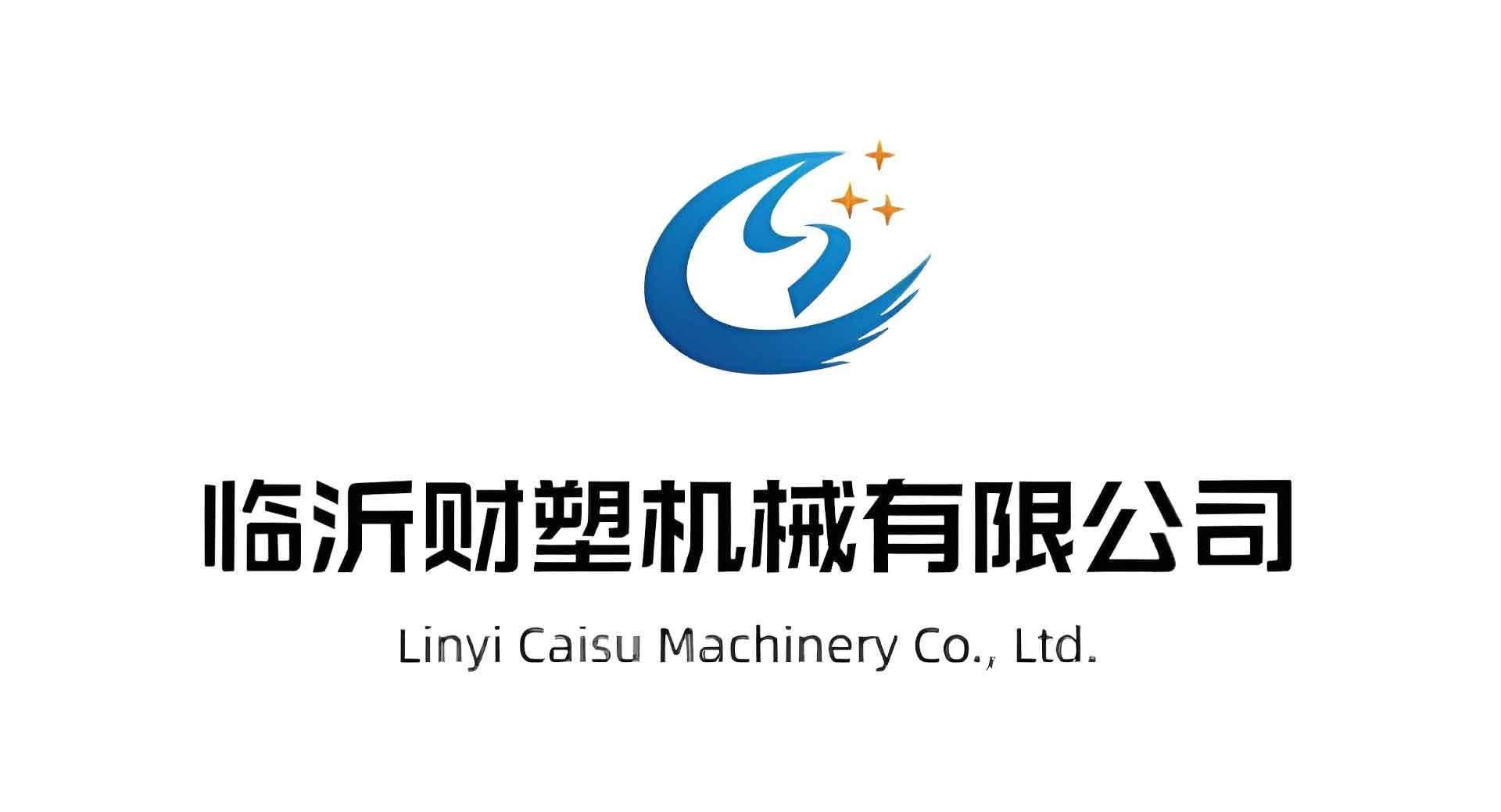Welcome to My Blog!
Before we dive into the content, I’d love for you to join me on my social media platforms where I share more insights, engage with the community, and post updates. Here’s how you can connect with me:
Facebook:https://www.facebook.com/profile.php?id=61567891941530
Now, let’s get started on our journey together. I hope you find the content here insightful, engaging, and valuable.
Caisu Machinery sells a variety of used plastic pipe production equipment. The products are of high quality and low price. Welcome to contact us for consultation and purchase. We will be happy to serve you.
Table of Contents
Introduction

Polymer mixing equipment is a cornerstone of modern plastic manufacturing, enabling the production of high-quality, consistent, and customized plastic products across industries like packaging, automotive, medical, and construction.
This blog provides a comprehensive guide to the benefits, types, and applications of polymer mixing equipment, offering valuable insights for manufacturers, engineers, and plant managers aiming to optimize their production processes.
Understanding the Role of Polymer Mixing Equipment in Plastic Manufacturing
What Is Polymer Mixing Equipment?
Polymer mixing equipment refers to a range of machinery designed to combine polymers (e.g., polyethylene, polypropylene, PVC) with additives, such as stabilizers, plasticizers, colorants, or reinforcements, to create uniform blends for plastic processing. These machines ensure that raw materials are thoroughly mixed to achieve consistent physical and chemical properties, critical for downstream manufacturing processes. Key components of polymer mixing equipment include:
- Mixing Chamber: Where polymers and additives are blended, often equipped with rotors, screws, or blades.
- Drive System: Powers the mixing mechanism, typically via electric motors for precise control.
- Feed System: Introduces raw materials at controlled rates to ensure uniformity.
- Temperature Control: Maintains optimal conditions to prevent degradation or premature curing of polymers.
The ability of polymer mixing equipment to produce homogeneous blends directly impacts the quality and efficiency of plastic output, making it a vital asset in manufacturing.
Why Polymer Mixing Equipment Is Essential for Plastic Output
The use of polymer mixing equipment is essential for achieving high plastic output due to its ability to streamline production, enhance material properties, and reduce defects. Unlike manual or less sophisticated mixing methods, polymer mixing equipment offers:
- Consistency: Ensures uniform distribution of additives, resulting in consistent mechanical and aesthetic properties.
- Efficiency: Automates and accelerates the mixing process, increasing throughput and reducing labor costs.
- Customization: Allows precise control over formulations, enabling tailored plastic products for specific applications.
- Waste Reduction: Minimizes material inconsistencies that lead to scrap or rework, boosting overall output.
By addressing these critical needs, polymer mixing equipment transforms raw materials into high-quality blends, directly contributing to increased plastic production capacity.
Key Benefits of Polymer Mixing Equipment for Plastic Output
Enhanced Mixing Efficiency with Polymer Mixing Equipment
One of the primary benefits of polymer mixing equipment is its ability to significantly improve mixing efficiency, enabling higher plastic output. Advanced designs, such as high-shear mixers or twin-screw extruders, ensure rapid and thorough blending of materials, even for complex formulations. Key efficiency features include:
- High-Speed Mixing: Rotors or screws operate at optimized speeds to achieve homogeneity in minimal time.
- Continuous Processing: Some polymer mixing equipment supports continuous mixing, eliminating batch downtime and increasing throughput.
- Automated Controls: Programmable logic controllers (PLCs) allow precise adjustment of mixing parameters, reducing operator error.
This enhanced efficiency translates into faster production cycles, allowing manufacturers to meet high-volume demands without compromising quality, making polymer mixing equipment indispensable for boosting plastic output.
Improved Product Quality Using Polymer Mixing Equipment
The quality of plastic products depends heavily on the uniformity of the polymer blend, and polymer mixing equipment excels at producing consistent, high-quality mixtures. By ensuring even dispersion of additives and fillers, this equipment enhances:
- Mechanical Properties: Uniform blends improve tensile strength, flexibility, or impact resistance, depending on the formulation.
- Aesthetic Consistency: Even distribution of colorants prevents streaking or uneven coloring in finished products.
- Thermal Stability: Proper mixing ensures additives like stabilizers are fully integrated, preventing degradation during processing.
The superior product quality achieved with polymer mixing equipment reduces defects and enhances customer satisfaction, supporting higher plastic output through fewer rejects and rework.
Versatility of Polymer Mixing Equipment Across Plastic Types
Polymer mixing equipment is highly versatile, capable of processing a wide range of polymers, from commodity plastics like polyethylene (PE) and polypropylene (PP) to engineering plastics like polycarbonate (PC) and polyamide (PA). This adaptability makes it suitable for diverse applications, including:
- Flexible Packaging: Mixing low-density polyethylene (LDPE) with slip agents for films and bags.
- Automotive Components: Blending reinforced polymers for high-strength parts like bumpers or dashboards.
- Medical Devices: Combining biocompatible polymers with precise additives for syringes or implants.
The versatility of polymer mixing equipment allows manufacturers to diversify their product lines, increasing plastic output by catering to multiple markets with a single system.
Reduced Material Waste with Polymer Mixing Equipment
Material waste is a significant challenge in plastic manufacturing, but polymer mixing equipment helps minimize losses by ensuring precise and consistent blending. Key waste-reduction benefits include:
- Accurate Dosing: Automated feed systems deliver exact amounts of polymers and additives, preventing overuse.
- Homogeneous Blends: Reduces defects caused by uneven mixing, such as weak spots or color inconsistencies, minimizing scrap.
- Recyclability: Some polymer mixing equipment can process recycled plastics, integrating them into new blends without compromising quality.
By reducing waste, polymer mixing equipment boosts plastic output by maximizing the use of raw materials, improving both profitability and sustainability.
Energy Efficiency and Sustainability in Polymer Mixing Equipment
Modern polymer mixing equipment is designed with energy-efficient features that lower operational costs and environmental impact, supporting sustainable plastic production. Sustainability benefits include:
- Optimized Motors: Variable frequency drives (VFDs) adjust power consumption based on mixing demands, reducing energy use.
- Thermal Management: Advanced cooling and heating systems maintain precise temperatures, minimizing energy waste.
- Eco-Friendly Processing: Enables the use of bio-based or recycled polymers, aligning with circular economy principles.
These energy-efficient and sustainable features make polymer mixing equipment a key driver of environmentally responsible plastic output, appealing to eco-conscious manufacturers and consumers.
Comparison Table of Polymer Mixing Equipment Types
To assist in selecting the appropriate polymer mixing equipment, the following table compares common types, their features, applications, and benefits. This table serves as a reference for manufacturers optimizing plastic output.
| Equipment Type | Key Features | Primary Applications | Advantages | Limitations | Output Impact |
|---|---|---|---|---|---|
| High-Shear Mixer | High-speed rotors, batch processing | Color masterbatches, compounded plastics | Fast mixing, excellent dispersion | Limited to batch processing | High-quality blends, moderate throughput |
| Twin-Screw Extruder | Co-rotating screws, continuous mixing | Extruded profiles, reinforced composites | High throughput, versatile | Complex maintenance | High output, consistent quality |
| Planetary Mixer | Multiple mixing blades, batch processing | High-viscosity polymers, adhesives | Handles thick materials, uniform mixing | Slower for low-viscosity blends | High-quality specialty products |
| Ribbon Blender | Helical ribbons, large capacity | Dry polymer blends, additives | Simple operation, large batches | Less effective for high-shear needs | High output for dry blends |
| Internal Mixer | Enclosed rotors, high torque | Rubber compounds, heavy-duty plastics | High shear, robust mixing | Energy-intensive, batch-based | High-quality, specialized output |
This table highlights the diverse capabilities of polymer mixing equipment, helping manufacturers choose the best type to boost plastic output based on their production needs.
Applications of Polymer Mixing Equipment in Plastic Manufacturing

Polymer Mixing Equipment in Packaging Production
The packaging industry relies heavily on polymer mixing equipment to produce films, bottles, and containers with consistent properties. Applications include:
- Flexible Films: Mixing LDPE or LLDPE with slip agents and colorants for food packaging or agricultural films.
- Rigid Containers: Blending PP or PET with impact modifiers for durable bottles or trays.
- Sustainable Packaging: Integrating recycled or bio-based polymers to meet eco-friendly standards.
Polymer mixing equipment ensures high-quality, uniform blends, boosting plastic output for packaging by reducing defects and enabling high-speed production.
Automotive Industry and Polymer Mixing Equipment
In the automotive sector, polymer mixing equipment is used to create high-performance plastic components that meet strict durability and aesthetic requirements. Key applications include:
- Interior Parts: Mixing PC or ABS with flame retardants and colorants for dashboards and trim.
- Exterior Components: Blending reinforced PP or PA for bumpers and body panels, requiring high strength and impact resistance.
- Under-Hood Parts: Combining heat-resistant polymers like PEEK with fillers for engine components.
The precision and versatility of polymer mixing equipment enhance plastic output for automotive applications, supporting lightweight, durable vehicle designs.
Medical Device Manufacturing with Polymer Mixing Equipment
The medical industry demands precise, high-purity polymer blends for devices like syringes, catheters, and implants, and polymer mixing equipment delivers the required consistency. Applications include:
- Biocompatible Plastics: Mixing PVC or TPU with plasticizers for flexible tubing or IV bags.
- Sterile Components: Blending polycarbonate with antimicrobial additives for surgical tools.
- Custom Formulations: Creating specialized blends for prosthetics or diagnostic equipment.
Polymer mixing equipment ensures compliance with stringent medical standards, boosting plastic output for critical healthcare products.
Construction and Industrial Applications of Polymer Mixing Equipment
In construction and industrial sectors, polymer mixing equipment produces durable plastics for pipes, insulation, and structural components. Applications include:
- PVC Piping: Mixing PVC with stabilizers and lubricants for water or drainage pipes.
- Insulation Foams: Blending polyurethane with blowing agents for thermal insulation panels.
- Composite Materials: Combining polymers with glass or carbon fibers for high-strength panels or beams.
The ability of polymer mixing equipment to handle robust formulations increases plastic output for construction, meeting demands for durability and performance.
Maintenance and Optimization of Polymer Mixing Equipment
Routine Maintenance for Polymer Mixing Equipment
Regular maintenance is critical to ensure polymer mixing equipment operates efficiently and maintains high plastic output. Key maintenance tasks include:
- Cleaning: Remove polymer residue and additive buildup from mixing chambers to prevent contamination and clogging.
- Lubrication: Apply appropriate lubricants to bearings, screws, or rotors to reduce friction and wear.
- Inspection: Check blades, screws, and seals for wear or damage, replacing components as needed to maintain mixing quality.
- Calibration: Adjust feed rates, temperature controls, and mixing speeds to ensure consistent performance.
These practices minimize downtime and extend the lifespan of polymer mixing equipment, supporting continuous plastic production.
Optimizing Polymer Mixing Equipment for Maximum Output
To maximize the benefits of polymer mixing equipment, manufacturers can implement optimization strategies:
- Material Pre-Processing: Dry or pre-blend materials to improve flow and reduce mixing time, enhancing throughput.
- Process Monitoring: Use sensors to track temperature, pressure, and viscosity, ensuring optimal mixing conditions.
- Automation Integration: Incorporate advanced PLCs or IoT systems for real-time adjustments, improving efficiency and consistency.
- Operator Training: Train staff on equipment operation and troubleshooting to minimize errors and downtime.
These strategies enhance the performance of polymer mixing equipment, boosting plastic output while maintaining quality.
Environmental and Economic Impacts of Polymer Mixing Equipment

Environmental Benefits of Polymer Mixing Equipment
Polymer mixing equipment supports sustainable plastic manufacturing by reducing waste and enabling eco-friendly processes. Key environmental benefits include:
- Recycled Polymer Processing: Capable of blending post-consumer or post-industrial plastics, promoting circular economy practices.
- Energy Efficiency: Modern designs with VFDs and optimized motors lower energy consumption, reducing carbon emissions.
- Waste Minimization: Precise dosing and homogeneous mixing reduce scrap, conserving raw materials.
These eco-friendly features make polymer mixing equipment a vital tool for sustainable plastic output, aligning with global environmental goals.
Economic Advantages of Polymer Mixing Equipment
The economic benefits of polymer mixing equipment stem from its ability to enhance productivity and reduce costs:
- Increased Throughput: High-efficiency mixing boosts plastic output, allowing manufacturers to meet market demands.
- Lower Material Costs: Reduced waste and precise dosing minimize raw material expenses.
- Long-Term Reliability: Durable designs and minimal maintenance requirements lower operational costs over time.
These economic advantages make polymer mixing equipment a cost-effective investment for plastic manufacturers of all scales.
Conclusion
Polymer mixing equipment is a transformative technology that boosts plastic output by enhancing efficiency, improving product quality, and reducing waste. Its versatility across applications—from packaging and automotive to medical and construction—makes it an essential asset for manufacturers seeking to stay competitive in the fast-paced plastics industry.
The comparison table provided earlier offers a quick reference for selecting the right equipment type, while the detailed sections on benefits, applications, and maintenance provide actionable insights for optimizing performance.
FAQ
What is polymer mixing equipment, and how does it boost plastic output?
Polymer mixing equipment blends polymers with additives to create uniform mixtures for plastic processing. It boosts plastic output by improving mixing efficiency, reducing waste, and ensuring consistent product quality.
What types of polymer mixing equipment are available?
Common types include high-shear mixers, twin-screw extruders, planetary mixers, ribbon blenders, and internal mixers, each suited for specific applications, as detailed in the comparison table.
How does polymer mixing equipment improve plastic product quality?
Polymer mixing equipment ensures even dispersion of additives, enhancing mechanical properties, aesthetic consistency, and thermal stability, reducing defects and boosting plastic output.
Can polymer mixing equipment process recycled plastics?
Yes, polymer mixing equipment can blend recycled polymers with virgin materials or additives, supporting sustainable production and increasing plastic output with eco-friendly materials.
What maintenance is required for polymer mixing equipment?
Regular cleaning, lubrication, inspection, and calibration ensure polymer mixing equipment operates efficiently, minimizing downtime and maintaining high plastic output.





